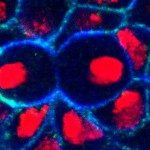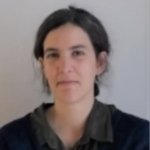Link to Pubmed [PMID] – 37682772
Link to DOI – 10.1021/acsami.3c07785
ACS Appl Mater Interfaces 2023 Sep; 15(37): 43403-43413
The mechanical properties of living cells reflect their physiological and pathological state. In particular, cancer cells undergo cytoskeletal modifications that typically make them softer than healthy cells, a property that could be used as a diagnostic tool. However, this is challenging because cells are complex structures displaying a broad range of morphologies when cultured in standard 2D culture dishes. Here, we use adhesive micropatterns to impose the cell geometry and thus standardize the mechanics and morphologies of cancer cells, which we measure by atomic force microscopy (AFM), mechanical nanomapping, and membrane nanotube pulling. We show that micropatterning cancer cells leads to distinct morphological and mechanical changes for different cell lines. Micropatterns did not systematically lower the variability in cell elastic modulus distribution. These effects emerge from a variable cell spreading rate associated with differences in the organization of the cytoskeleton, thus providing detailed insights into the structure-mechanics relationship of cancer cells cultured on micropatterns. Combining AFM with micropatterns reveals new mechanical and morphological observables applicable to cancer cells and possibly other cell types.

